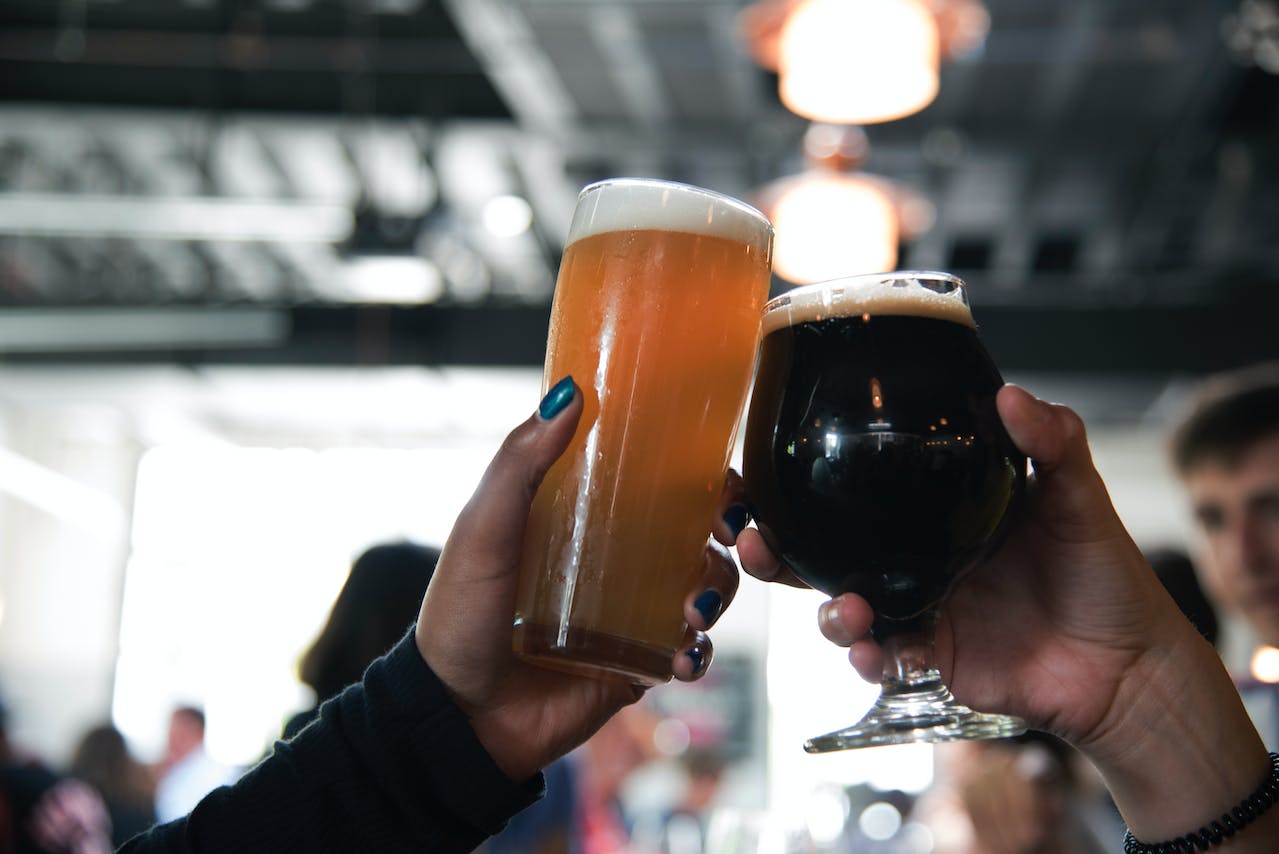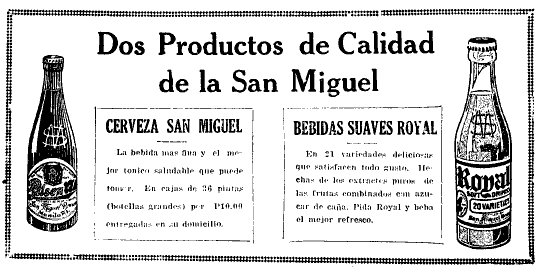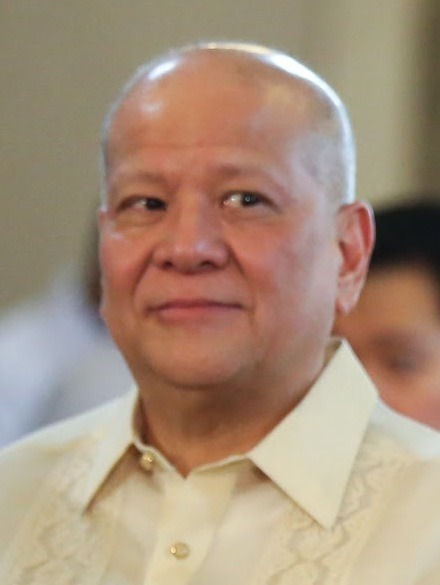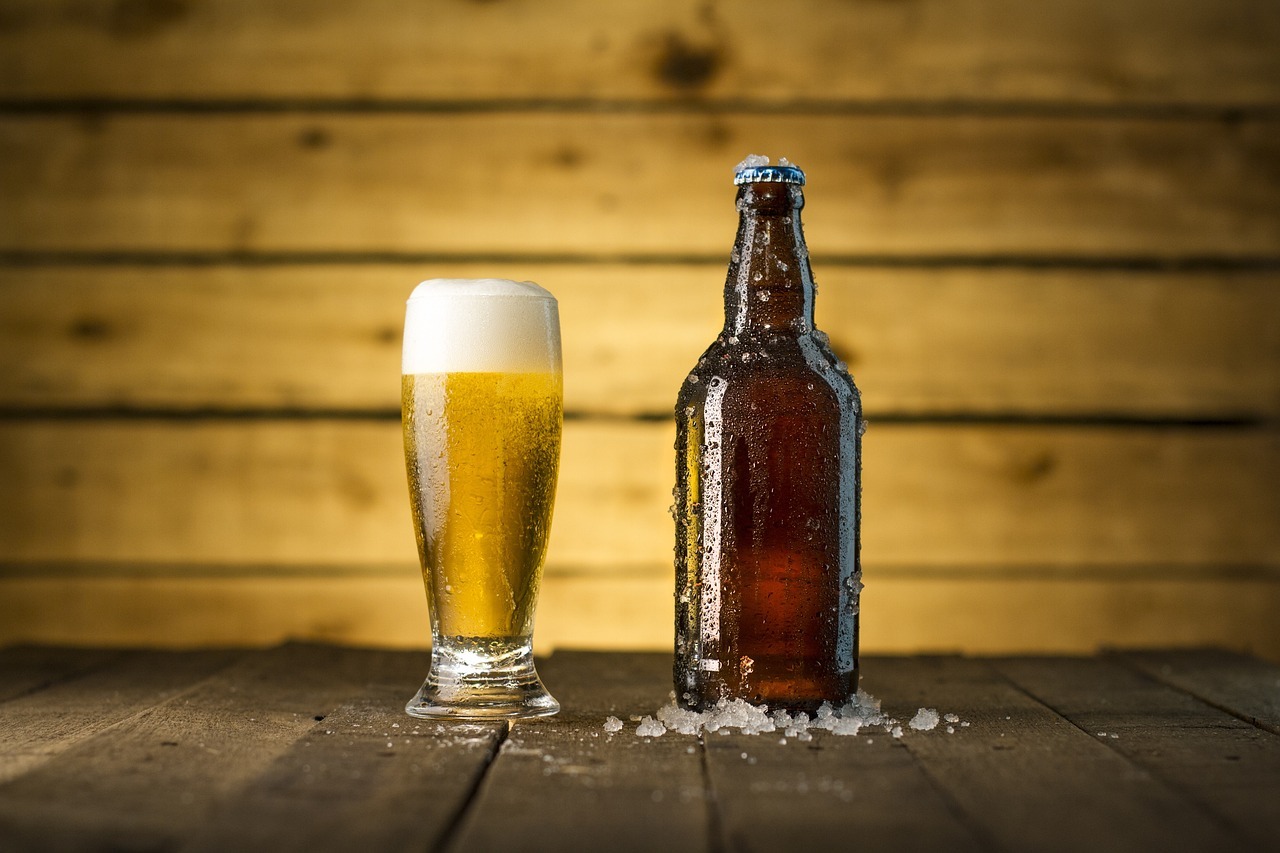Beer is one of the most popular alcoholic beverages in the Philippines. It seems that beer creates bonds for all Filipinos coming from every walk of life, from the tricycle drivers loafing around at the nearest neighborhood store to the yuppies spending their after-work hours at a ritzy joint in the city.
The Filipinos’ love for beer is unquestionably deep-rooted. Drinking beer is a national pastime, and it would often be consumed during parties, get-togethers, and simple celebrations about getting promoted or receiving salary for the month.
The most popular beer producers in the Philippines are San Miguel Corporation and Asia Brewery. Between the two, San Miguel is the oldest and the most dominant in the market, thanks to its iconic flagship brew, San Miguel Pale Pilsen. To know more about these beer producers, here is the history of beer in the Philippines.
The Origins of San Miguel Corporation
The origins of San Miguel Corporation can be traced back to 1889 when a businessman by the name of Enrique Maria Barretto de Ycaza y Esteban applied for a royal grant from Spain to build a brewery in the Philippines. The royal grant given to Barretto allowed him to operate the brewery for 20 years.
On September 29, 1890, which was the feast day of Saint Michael the Archangel (Michaelmas), Barretto established “La Fábrica de Cerveza San Miguel” at 6 Calzada de Malacañan (currently known as Josel Laurel Street), which is near the Malacañang Palace, a property that serves as the official residence of the president of the Philippines. [1] The name of the brewery comes from the “arrabal” or district where it was located: San Miguel, Manila.
The brewery of Barretto was divided into two sections. One section is for beer production, while the other section is for producing ice. The brewery was the first in the Southeast Asia region to use modern equipment during that time, and the equipment allowed the fast and efficient production of beer in the facility.
Because of the success of the brewery in just a few years, Barretto decided to incorporate his brewery in order to make it bigger. The incorporation of the brewery occurred on June 6, 1893, with Barretto registering a capital of PHP 180,000, which was already a large sum of money in that time period. Along with Barretto, the incorporated brewery was also founded by his business partners, most notably Pedro Pablo Róxas, who would later be assigned as the brewery’s manager from 1893 to 1896. However, before Róxas resigned as manager, he first acquired Barretto’s shares in the brewery that was worth PHP 42,000.
After Barretto retired in May 1896, Róxas bought the rest of Barretto’s shares or stake in the company. Under Róxas’s ownership, the facility became much more modern as automatic machines and electric conveyors were installed. By 1910, all of the equipment of the brewery was modernized.
San Miguel Brewery
When Róxas passed away in 1913 while in Paris, the other shareholders of the company, particularly Benito Legarda and Gonzalo Tuasón, decided to change the form of the company from a firm created by co-participants or business partners to a corporation. The corporation, which they named San Miguel Brewery, Inc., was officially formed in 1913, and it was Róxas’s son, Antonio Róxas de Ayala, who was appointed as the corporation’s president.
It was during the 1910s when the products of San Miguel Brewery were being exported in numerous countries and cities around the world, including Guam, Hong Kong and Shanghai. [1]
Sadly, Antonio Róxas de Ayala’s position in the corporation was short-lived, as he resigned in 1918 and was replaced by Ramón J. Fernández, who had a stake in the business. Antonio Róxas de Ayala’s nephew, Andrés Soriano, was assigned as the acting manager after being promoted from being a clerk in the accounting department.
Under the management of Ramón J. Fernández, San Miguel Brewery, Inc. was able to expand into the soft drinks market by opening the Royal Soft Drinks Plant in 1922. Five years after the founding of the plant, San Miguel Brewery, Inc. was able to secure the rights to distribute and bottle Coca-Cola in the Philippines. Coca-Cola is one of the most popular soft drinks in the world that was introduced in 1886 by The Coca-Cola Company.
In 1925, San Miguel Brewery, Inc. expanded into the ice cream business by purchasing the Magnolia Plant, which produced Magnolia-branded ice cream and other iced delicacies. Then, in 1939, Andrés Soriano was elected as president after the reorganization of the company.
During the Second World War, the Philippines was invaded by the Japanese military forces. They also seized the San Miguel Brewery and renamed it Balintawak Brewery, where they used up raw materials for their supply of brew.
After World War II, San Miguel Brewery returned to operations and opened a new brewery to increase the production of beer in the country and to distribute more beer to other countries where it is exported. This brewery was established in 1947 in Polo, Bulacan (although Polo is now part of Valenzuela City, which is part of the National Capital Region or NCR).
San Miguel Corporation
In 1965, Antonio Róxas y Gargollo (a relative of Andrés Soriano) was appointed as chairman following Soriano’s death in 1964. Soriano’s son, Andrés Soriano Jr., was appointed as president, although he would eventually become the chairman in 1967.
It was also in 1967 when a brewery and glass plant was opened in Mandaue, Cebu. By 1973, San Miguel Corporation was able to exceed one billion pesos in sales for the first time, which made it one of the most profitable companies in the Philippines.
During the 1960s, San Miguel had some head-to-head competition from short-lived beer brands, notably Halili Beer. It was manufactured at a plant called F. F. Halili Enterprises in the barangay (village) of Balintawak in Quezon City, Metro Manila. The company was owned by Fortunato Halili, a former governor of the province of Bulacan (near Manila).
Halili also had other business ventures, including the Halili Transit. Rumor had it that Halili Beer became so successful that San Miguel attempted (or even threatened) to buy it out. But for unknown reasons, Halili Beer folded; speculation spread that the company failed to take off further from the sons of the founder.
The Founding of Asia Brewery, Inc.
Asia Brewery, a company that would eventually become a rival to San Miguel Corporation, was founded on January 27, 1982, by Lucio C. Tan, Sr., a business magnate who is known for owning or at least having shares for Philippines Airlines, the Fortunate Tobacco Corporation, and the Philippine National Bank.
The first brewery for Asia Brewery, Inc. was established in Cabuyao, Laguna, and this brewery’s first product was Beer Hausen Pale Pilson. A year later, another product called Max Premium Beer was introduced. However, Asia Brewery’s most successful product is Beer Pale Pilson, which was introduced in 1988 and would later be known as Beer na Beer.
Besides brewing their own products, Asia Brewery, Inc. has also brewed and distributed different brands of beer over the years. Asia Brewery has previously been a licensee brewer for popular beer brands such as Budweiser, Coors Original, Coors Light, Carlsberg, and Lone Star. As of 2023, Asia Brewery distributes products that are licensed by Heineken and Asahi Super Dry. [2]
San Miguel Corporation vs Asia Brewery
The rivalry between San Miguel Corporation and Asia Brewery started when the latter introduced their budget-friendly beer, Beer na Beer, in 1988. In addition to looking and tasting like the original San Miguel Beer, Beer na Beer was also fairly affordable during that time, so many Filipinos opted to buy the cheaper beer that still had the same taste as what they were used to.
Asia Brewery’s Beer na Beer challenged San Miguel Corporation to do better when it comes to pricing and marketing their products. Beer and sports traditionally go well together. With the growing popularity of basketball in the Philippines at the time, Beer Hausen jumped on the bandwagon by launching its own basketball team in the Philippine Basketball Association (PBA), the local equivalent of the NBA.
With the success of Beer Hausen, San Miguel responded to the competition with three brews: Lagerlite, Red Horse, and Gold Eagle. Lagerlite, a light beer, was targeted specifically for the female market. Red Horse was the first extra-strong beer (lager type) and still exists today. Gold Eagle, a light-bodied, low-cost beer, was made for “easy drinking”; its primary target market was the ordinary “working man.”
Despite Asia Brewery’s success with Beer na Beer, San Miguel Corporation still came up on top as the biggest brewery in the Philippines, mainly due to its history and long-standing reputation among Filipino beer lovers.
It was during Asia Brewery and San Miguel Corporation’s rivalry in the 80s when the original San Miguel Brewery buildings located in San Miguel, Manila were demolished after the property’s ownership was transferred to the Philippine government. After the demolition, the government decided to make the area a part of the Malacañang Palace grounds. A section of the was made into a park, while a new executive building was erected nearby.
Dispute Over the Ownership of San Miguel Corporation
After Andrés Soriano Jr.’s death in 1984 due to cancer, a shareholder in the company named Eduardo Cojuangco Jr. became the chairman of SMC. However, disputes over the ownership of San Miguel Corporation also began in the 1980s, as the son of Soriano Jr., Andrés Soriano III, also wanted to run the company under his ownership. The government later sequestered Cojuangco’s stake at San Miguel Corporation and allowed Soriano III to run the company, even though the Soriano family’s holdings in San Miguel were only 1% during that time.
Andrés Soriano III would run the San Miguel Corporation from 1986 until his resignation in 1998. Eduardo M. Cojuangco Jr. was once again the chairman of the corporation in 1999, while Ramon S. Ang, a shareholder, was appointed as vice-chairman. After Cojuangco Jr.’s death in 2020 due to pneumonia and heart failure, Ramon S. Ang was elected as the chief executive officer while retaining his position as vice-chairman. [3] As of 2023, the position of chairman is vacant.
Craft Beer in the Philippines
Craft beer, although not as commercially dominant as mainstream beers, is often superior in taste, appearance, and quality. Despite how large San Miguel Corporation and Asia Brewery, Inc. are, the local craft beer industry is booming. The past few years have seen a steady rise in the number of microbreweries, not only in Metro Manila but also in many parts of the Philippines.
The wide range of fresh, naturally made, and handcrafted beers has won considerable favor in the country, especially among the younger folks and those who have gotten tired of commercial beers.
In Manila alone, you can find several craft breweries whose products will appeal to casual beer drinkers and passionate beer enthusiasts alike. There are various unique craft beers to be had and enjoyed, such as honey wheat, citrus, Belgian wheat, American IPA, coffee stout, pale ale, and many more.
On the city outskirts and nearby provinces, one can enjoy honey stout and even vegan beers. On the cool mountains of the faraway north, you can try craft beers made from local ingredients such as black rice, wild sunflower honey, and orange zest. Some of the breweries apply traditional brewing techniques, while others utilize newer technologies and equipment to deliver unique-tasting beers.
Conclusion
The beer products made in the Philippines are arguably some of the best in the world when it comes to flavor. Because of how good beers in the Philippines are, they are already exported to different countries around the world. If you haven’t tried beer from the Philippines yet, you should definitely try it as soon as possible, and you won’t be disappointed.
References
[1] Companies History (2013, July 29). San Miguel. Companies History. Retrieved November 20, 2023, from https://www.companieshistory.com/san-miguel/
[2] Venzon, C. (2016, May 27). LT Group unit to brew Heineken in Philippines. Nikkei Asia. Retrieved November 20, 2023, from https://asia.nikkei.com/Business/LT-Group-unit-to-brew-Heineken-in-Philippines
[3] CNN Philippines Staff. (2021, April 17). Ramon Ang takes role as San Miguel CEO. CNN Philippines. Retrieved November 20, 2023, from https://www.cnnphilippines.com/business/2021/4/17/Ramon-Ang-takes-role-as-San-Miguel-CEO-.html





